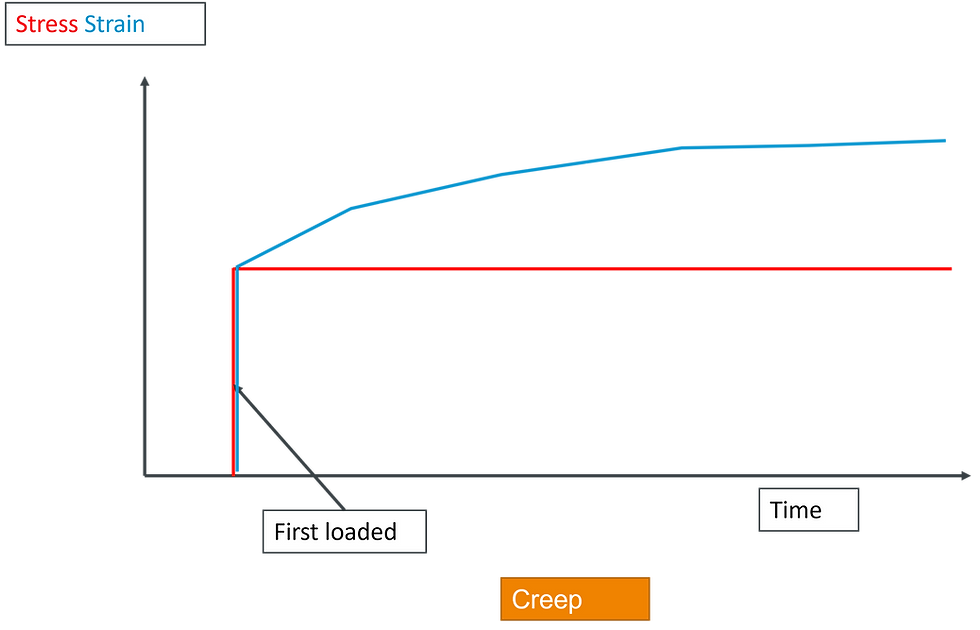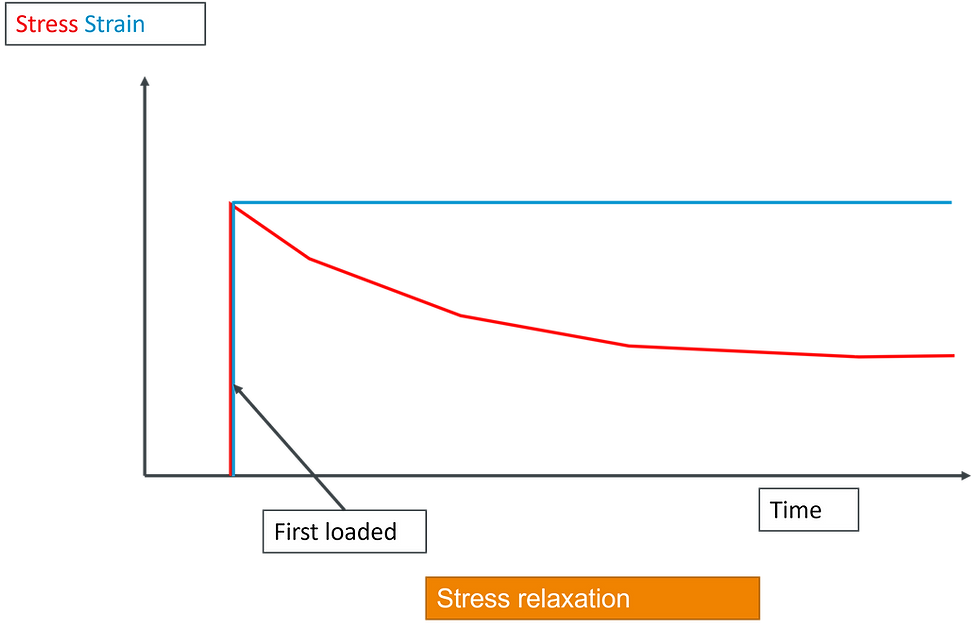Creep, stress relaxation and shrinkage are different concepts but easily confused. This post makes a clear differentiation of them.
Creep
Creep is the gradual increase in strain over time under the same load. It is typically seen in soil or concrete, where the material has a low degree of extraction from the nature. The load must be constant for creep to happen, and the material acts as if its stiffness goes down, leading to increase in strain.
In the case of soil, creep should be differentiated from consolidation, which also leads to gradual increase in strain over time. Consolidation is the movement of pore water whereas creep is the self re-organisation of the soil particles.
Concrete when subject to compression load also creeps. The rate and final magnitude of creep increases substantially once the compression stress overpasses about half of the concrete compressive strength.

Stress relaxation
Stress relaxation is the gradual reduction in stress over time under the same strain. It is typically seen in situations where the material is prestressed, either in tension or compression. The prestress is usually applied by inducing a given strain into the material and the strain is then locked in. While the strain keeps constant, the level of locked in stress creeps down, as if the effective stiffness of the material goes down.
Pre- or post- tensioned tendons, in precast bridge girders or ground anchors. These tendons lose their effectiveness over time
Tunnel gaskets, where their water tightness against certain level of water pressure is dependent on the compressive stress within them. In simple terms, they need to be squeezed hard for them to work well.

Shrinkage
Shrinkage is also a gradual increase in strain over time, but is entirely irrelevant to stress. It is related to the water content of the material and the environment it is exposed to. Read this post if you need to know more.
Comments